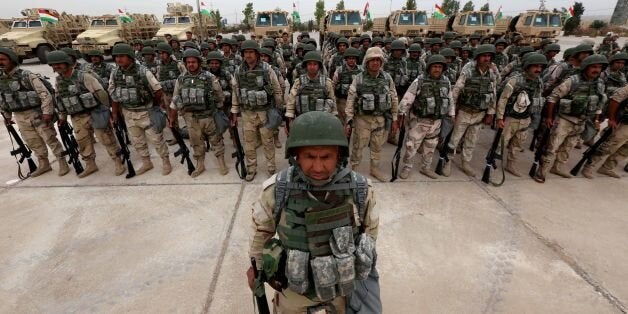
What's all this buzz about Sykes-Picot, and why are we hearing about it now - 100 years after the fact?
The Sykes-Picot agreement was a secret document signed by Britain and France - with a wink and a nod from czarist Russia - that basically carved up the Ottoman Empire and placed most of the Middle East under British and French administration.
Brokered during World War I, Sykes-Picot was a backroom deal, not a publicly debated diplomatic treaty. When its terms were leaked to the media in 1917 by Russia's new Bolshevik government, a major international scandal erupted.
Fast forward to June 10, 2014. As ISIS terrorists breached the international border between Iraq and Syria, they broadcast photos and video under the Twitter hashtag #SykesPicotOver. From that moment, noted The Guardian, references to the Sykes-Picot agreement became "a kind of convenient shorthand for western double-dealing and perfidy."
What's in a name? Or in this case, two names?
The Sykes-Picot Agreement was named after two diplomats who served as its primary negotiators: Sir Mark Sykes, a British Conservative Party politician; and François Georges-Picot, a French attorney.
Although it would be a stretch to describe Sir Sykes as a Kurdologist by today's academic standards, it's worth noting that he traveled through Kurdistan and even published an ethnographic study of the Kurds in 1908. The rather puzzling map that he created during his travels can be seen here.
What was the U.S. position on the Sykes-Picot agreement?
U.S. President Woodrow Wilson objected not only to the agreement's imperialist tone, but also to the underhanded manner in which it had been negotiated. In 1918, he began his famous Fourteen Points speech with these words: "The day of conquest and aggrandizement is gone by; so is also the day of secret covenants entered into in the interest of particular governments and likely at some unlooked-for moment to upset the peace of the world."
Despite Wilson's many statements about the virtue of national self-determination, in 1919 he dispatched an American team to analyze how the post-war Middle East should be structured and governed. The Americans drew a new map of the region and proposed arbitrary national boundaries, concluding--similarly to Sykes and Picot--that foreign administration was necessary to manage local ethnic and tribal tensions.
What bearing does the Sykes-Picot agreement have on The Kurdish Question and the geopolitics of the modern Middle East?
Although the national boundaries that were negotiated by Sykes and Picot differ from what we see on modern maps today, many policy experts attribute the ongoing conflict between Israel and the Palestinians, as well as the Syrian Civil War and the rise of ISIS, to the artificial national borders that the Sykes-Picot agreement blueprinted.
The fact that the Sykes-Picot agreement effectively created new countries - including the modern states of Iraq, Jordan, Lebanon and Syria - without the consent or participation of anyone living in the region, is both morally problematic and completely contrary to today's international relations norms, which are governed - or at least should be governed - by international law.
100 years later, what's next for the Kurds?
Right now, conditions on the ground in Iraq and Syria bear a striking resemblance to those that pre-dated the break-ups of India, Yugoslavia and Sudan. "We don't know the fate of the people in this region," former KRG Prime Minister Barham Ahmed Salih explained in a recent interview, "But, for sure, this time - unlike a hundred years ago, when Mr. Sykes and Mr. Picot drew the lines in the sand - the people of the region will have much to do with shaping the new order."
Now that central governance from Baghdad has become a fiction, the territorial integrity of Iraq is in play. One paradigm is a federalized nation, which would give greater autonomy to Kurds in the far north, Sunni Arabs in the west and Shia Arabs in the south. A second option is a fully independent Kurdistan.
In one of his most explicit statements about Kurdish independence to date, on January 22, 2016, KRG President Barzani said, "[world leaders] have come to this conclusion that the era of Sykes-Picot is over... It's illogical to continue or insist on repeating a wrong experiment that was repeated for 100 years and is leading nowhere...I think it [independence] is now much closer than at any other time."
E.A. Nolan is an international writer/producer with a longstanding interest in Kurdish issues, global health and human rights. This article was originally written for The Kurdish Project's #BeyondBorders campaign, which is raising awareness about the human consequences of the Sykes-Picot legacy.
